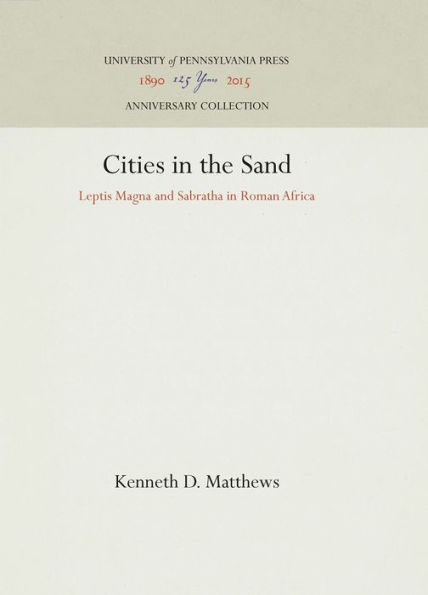Read an Excerpt
Preface
This book is intended primarily as a pictorial introduction to the personality of two towns. Today they attract only a few curious travelers, but two thousand years ago Leptis Magna and Sabratha teemed with important agricultural and commercial life. It was this very manner of life which made these cities, their surrounding province and all of Africa so important to citizens living in Rome, the capital city of the Roman Empire. Since those ancient days the rougher forces of nature have re-exerted their control over this section of the Tripolitanian coast, knocking great colonnades to the ground, bruising finely carved architrave blocks, and finally smothering all in drifting sand dunes.
In modern times a few mysterious sentinel-like stones encouraged sporadic digging for the sake of recovering an occasional strange inscription or piece of mute sculpture. This, however, was most certainly not the way to discover exactly what lay beneath the sands, and during its control over modern Tripolitania the Italian government encouraged its archaeologists to devote attention to these symbols of Rome's ancient past. For the first time scientific methods of excavation were applied to the ruins of Leptis Magna and Sabratha and eventually authoritative reports began to appear in the indispensable series entitled Africa Italiana. In more recent years work has been done at Leptis Magna and the hinterland of Tripolitania under the auspices of the British School at Rome as well. I n a forthcoming publication, the British School will survey in scholarly detail the result of its efforts at Leptis Magna.
From these remarks it will be evident that our present little book cannot pretend to cover all the fine points and valuable details of a scientific publication. Rather can it serve only as a visual lure to attract the attention of the curious reader to a subject of undeniable value and interest.
The author is deeply indebted to John B. Ward Perkins, Esq., for his very kind suggestions concerning the text and illustrations. While studying the latter the reader should be advised that restoration and reconstruction have been resorted to by the excavators in order to offer some concept of original forms as well as to protect what original elements still survive.



